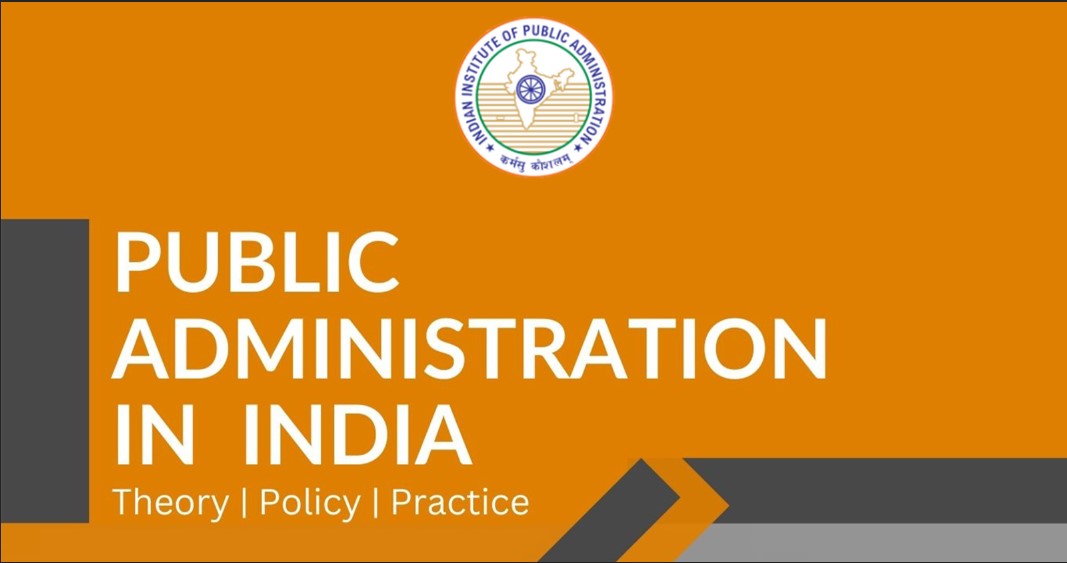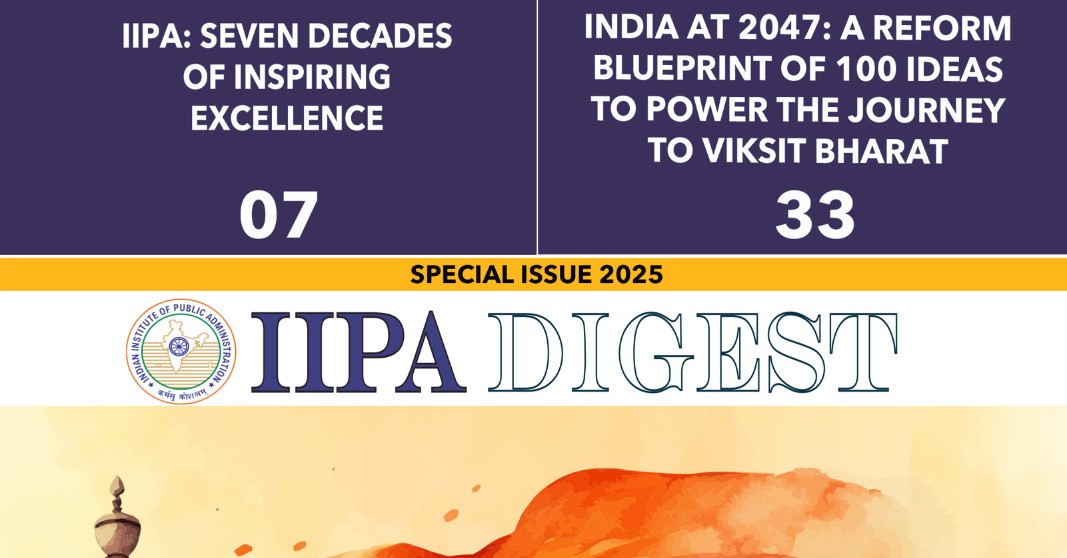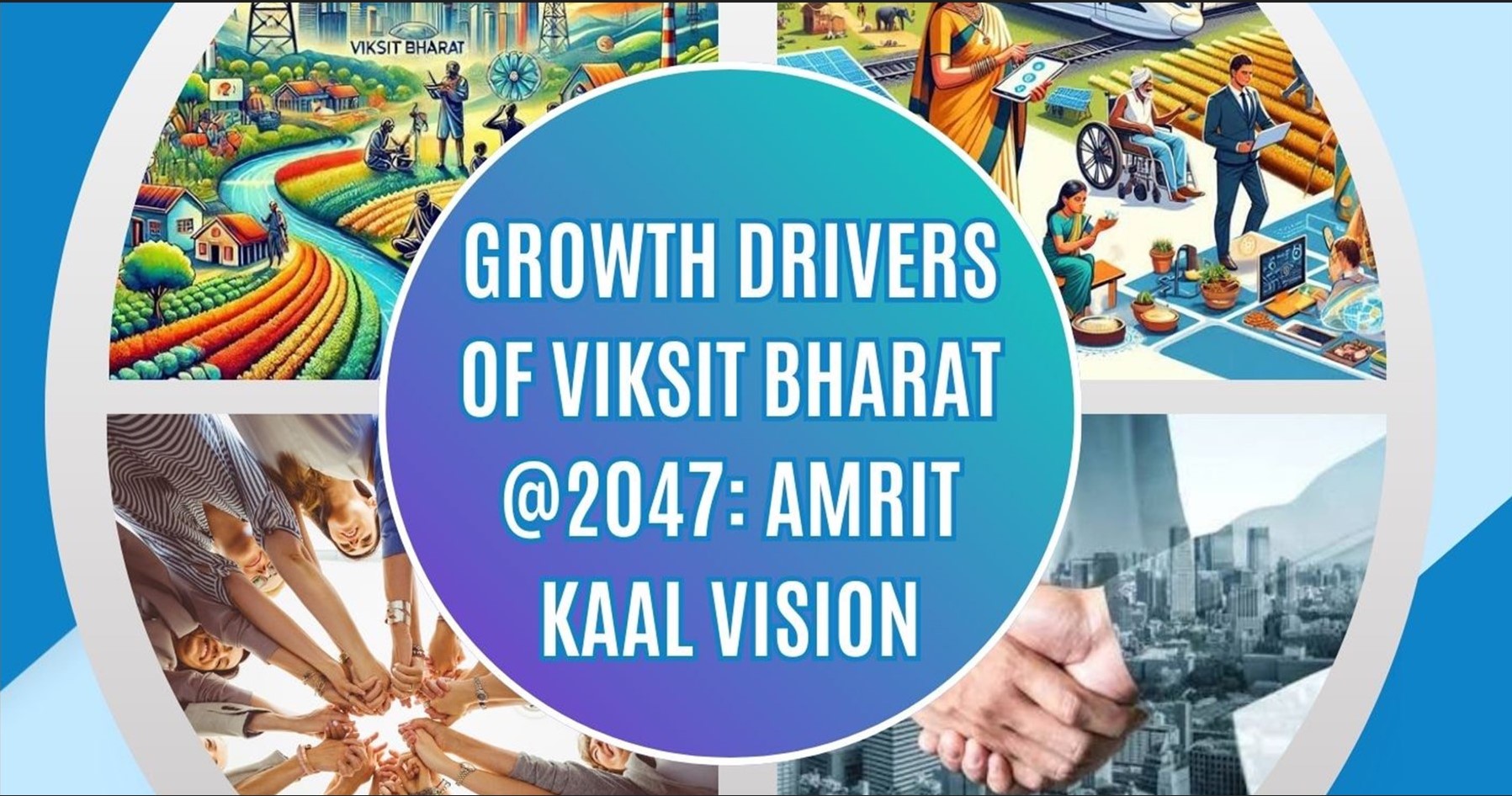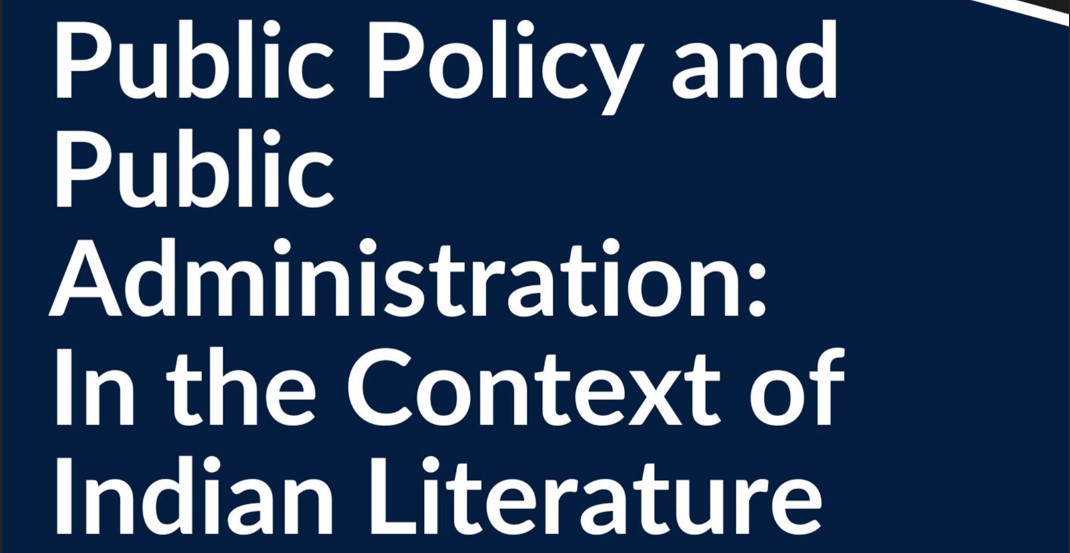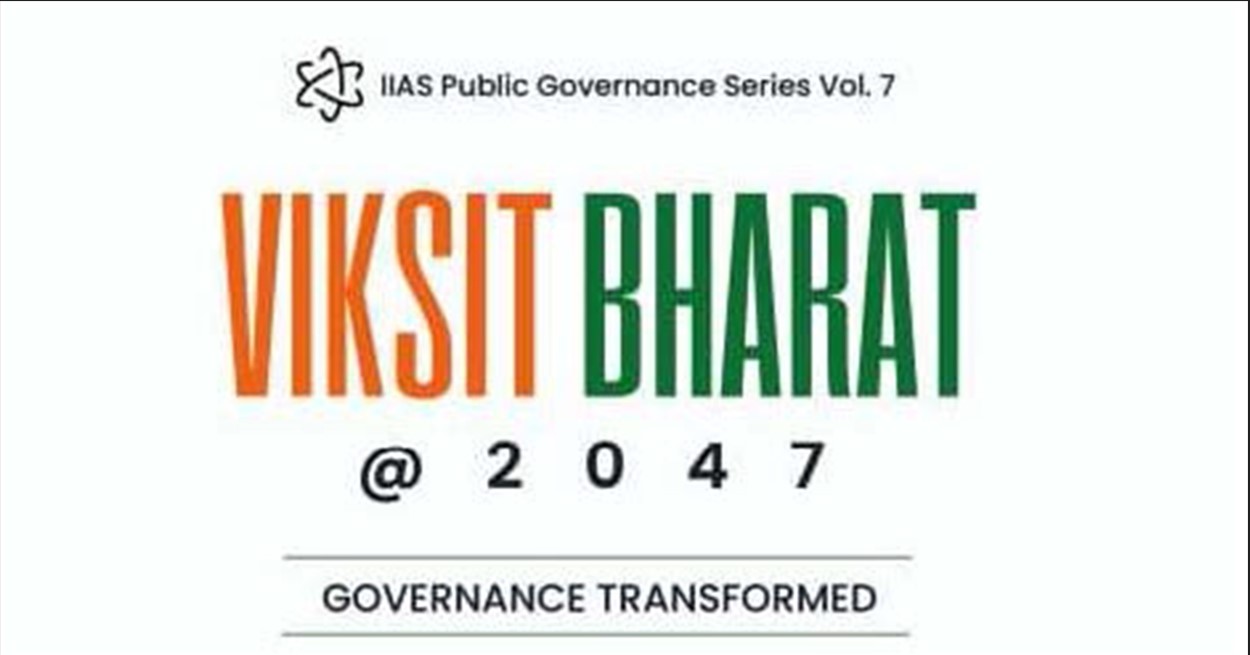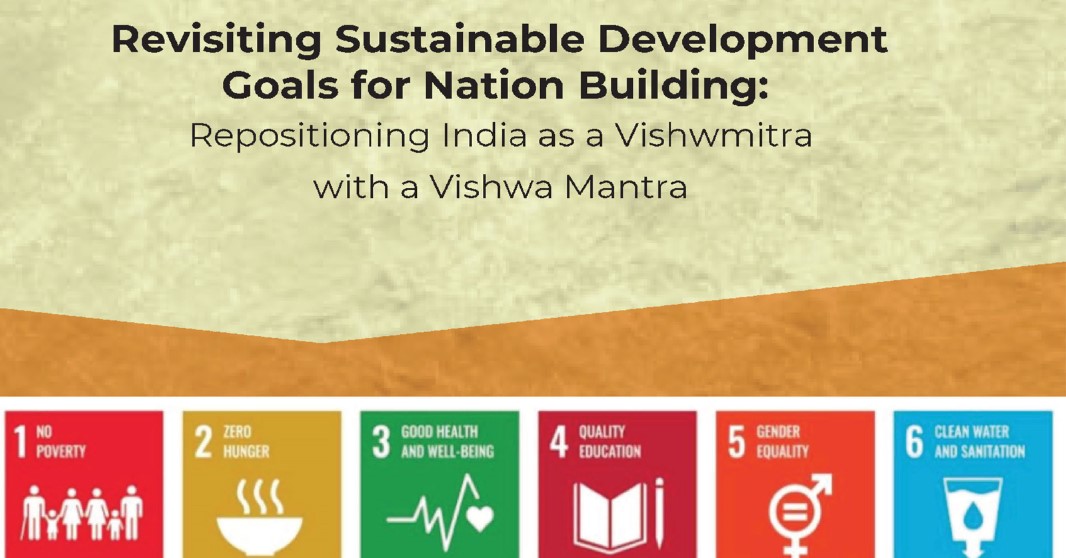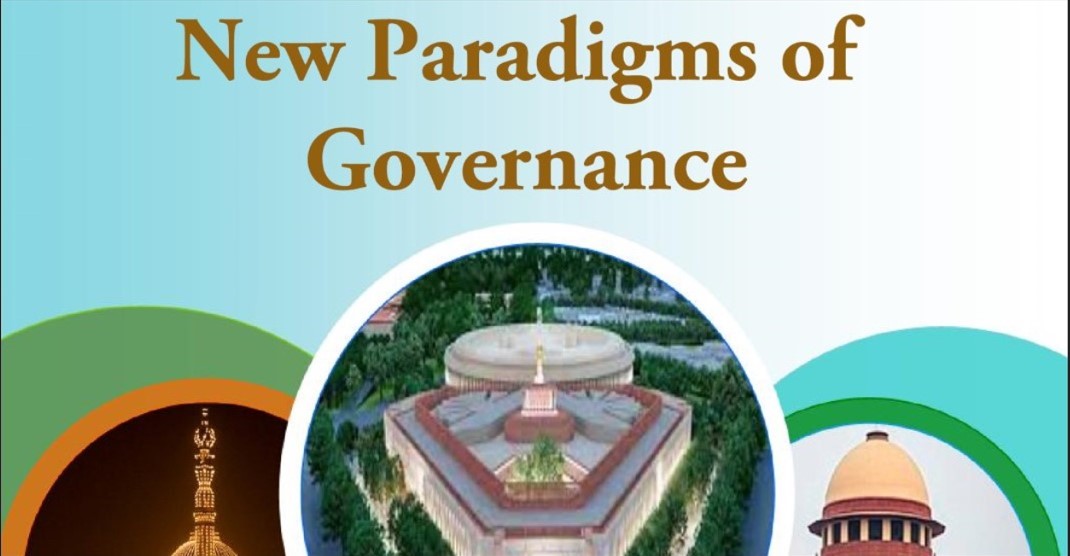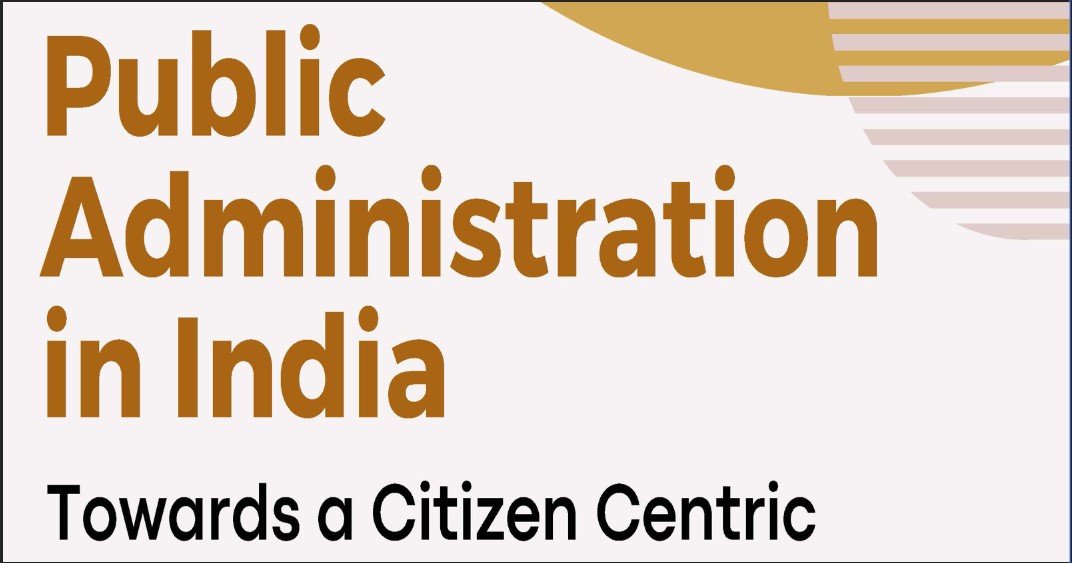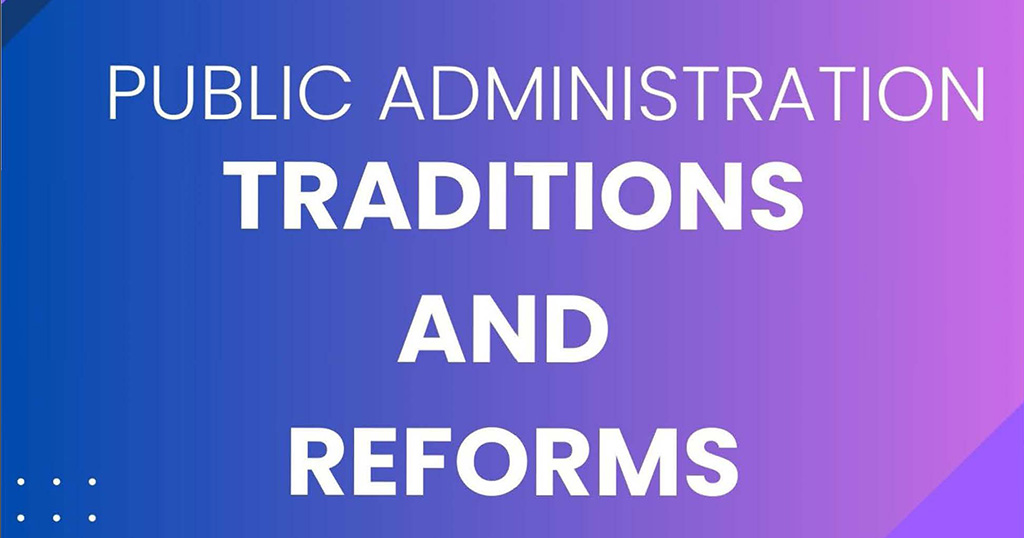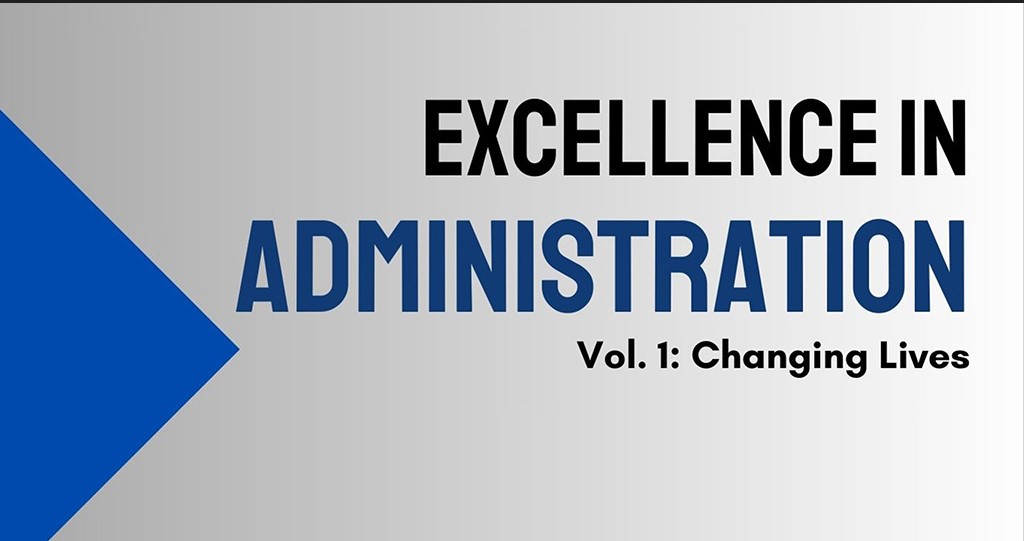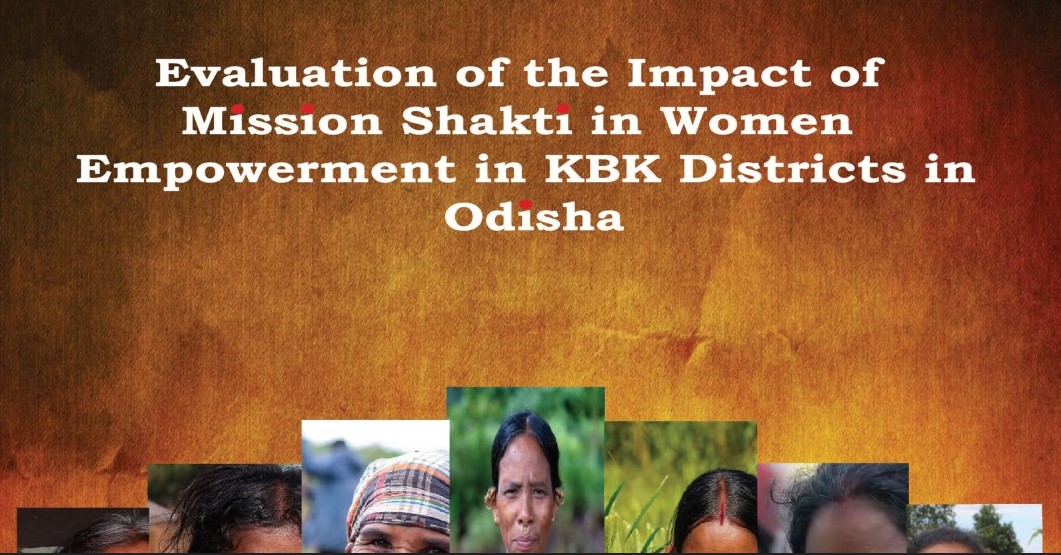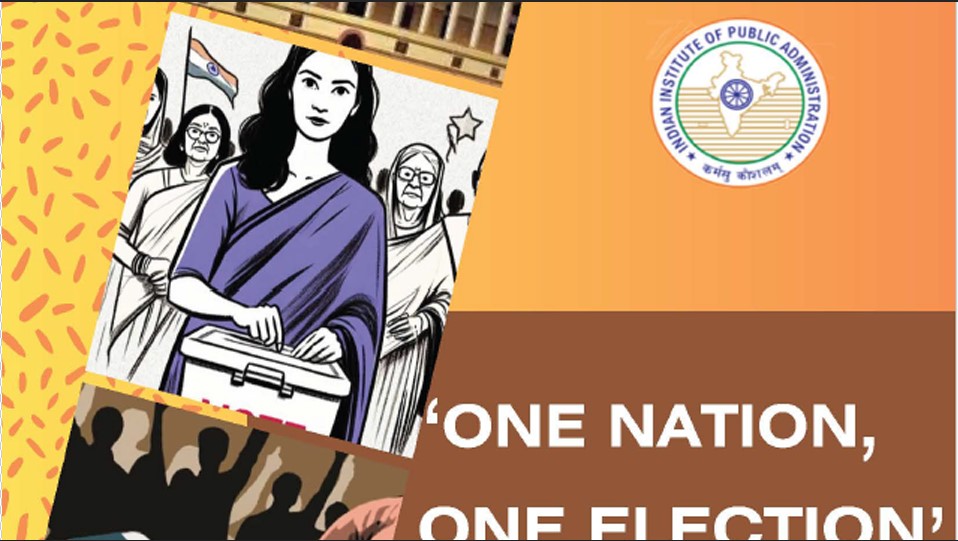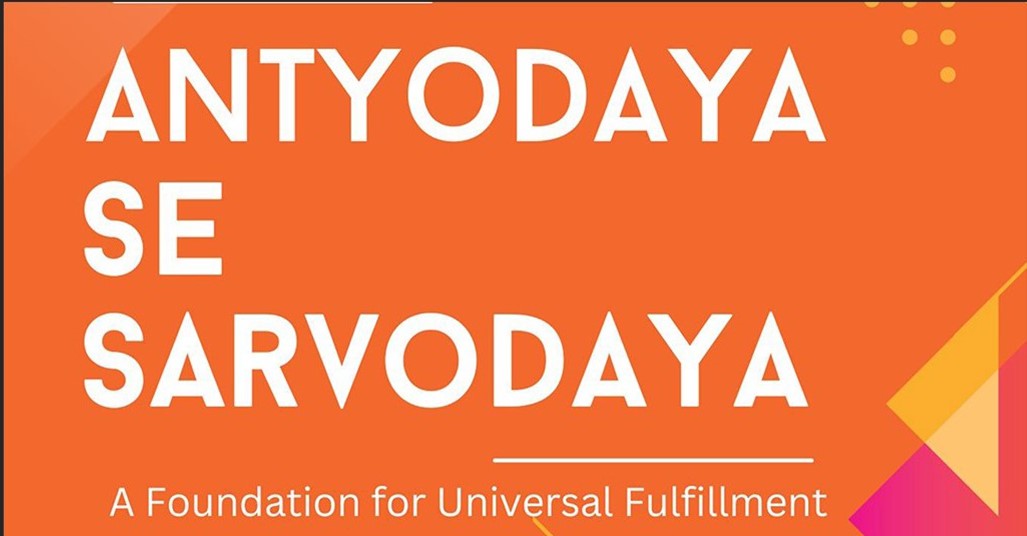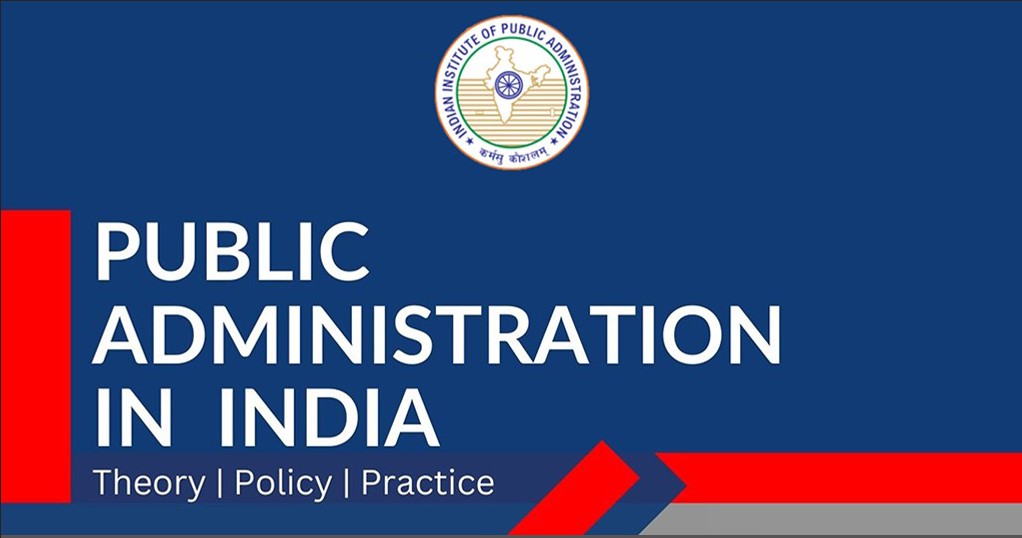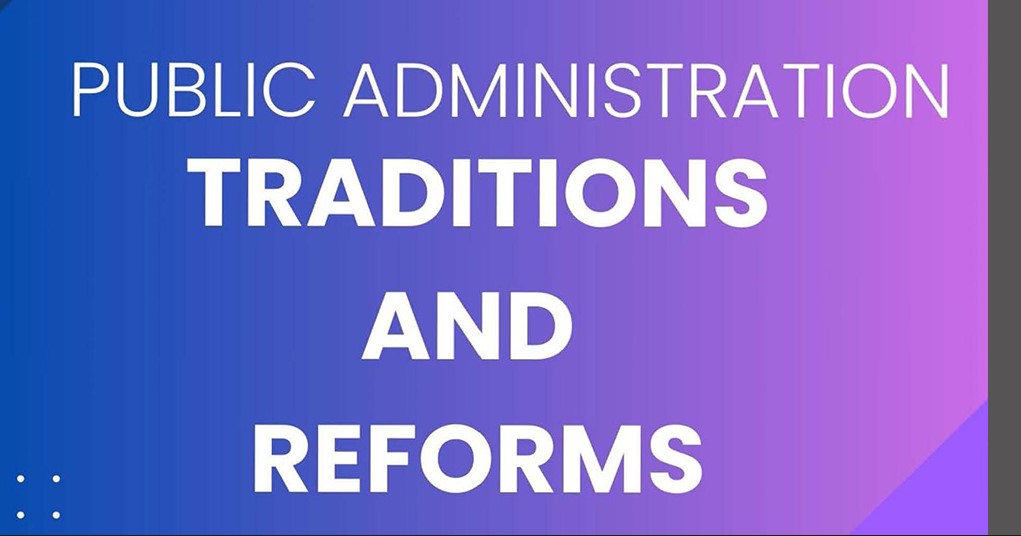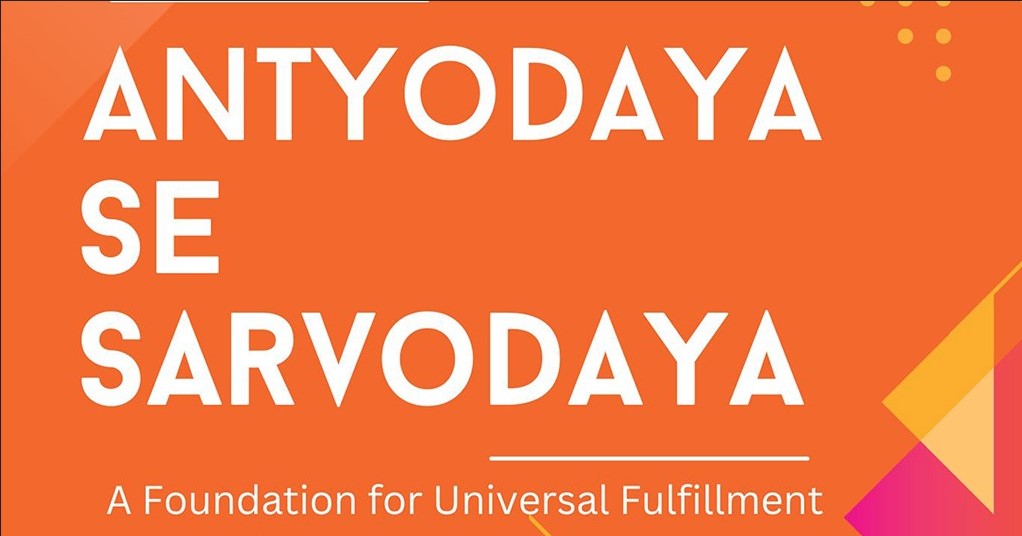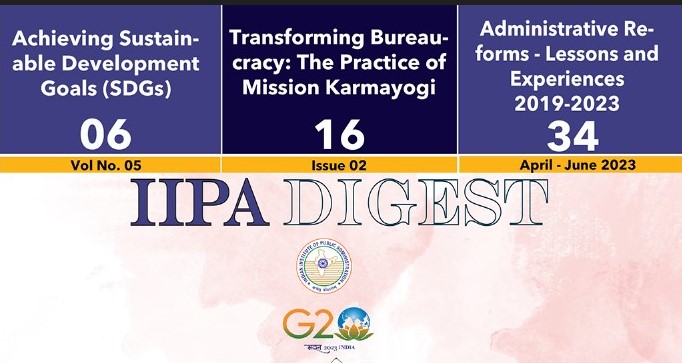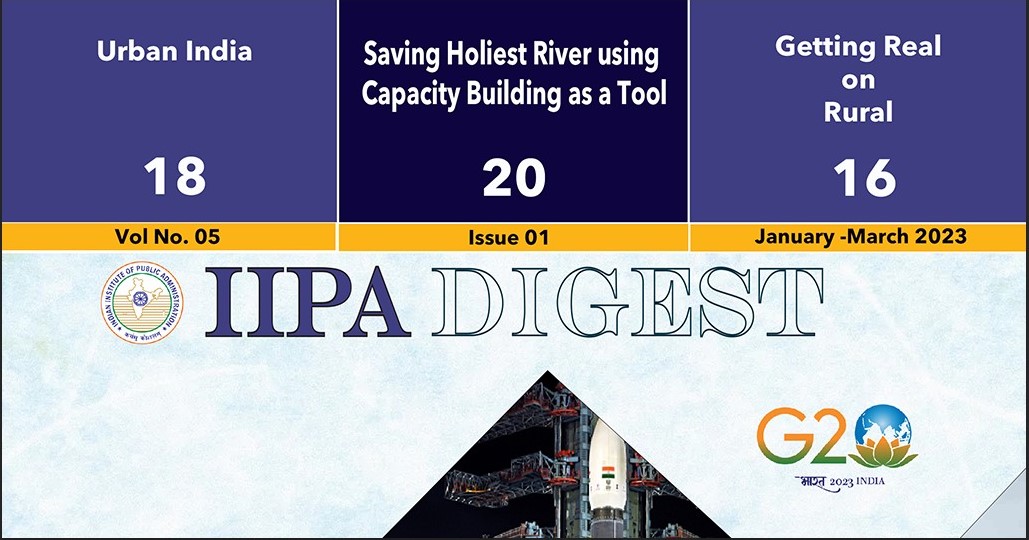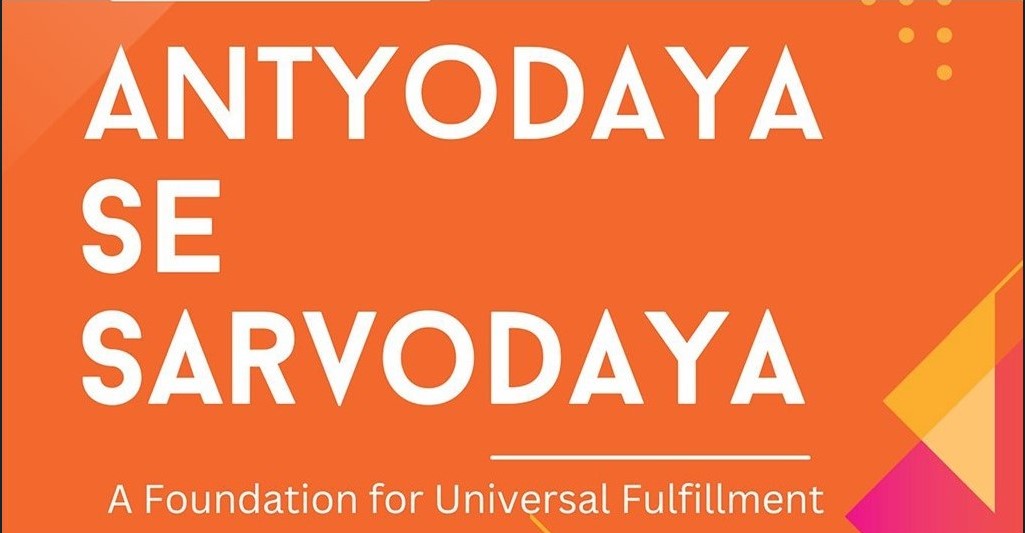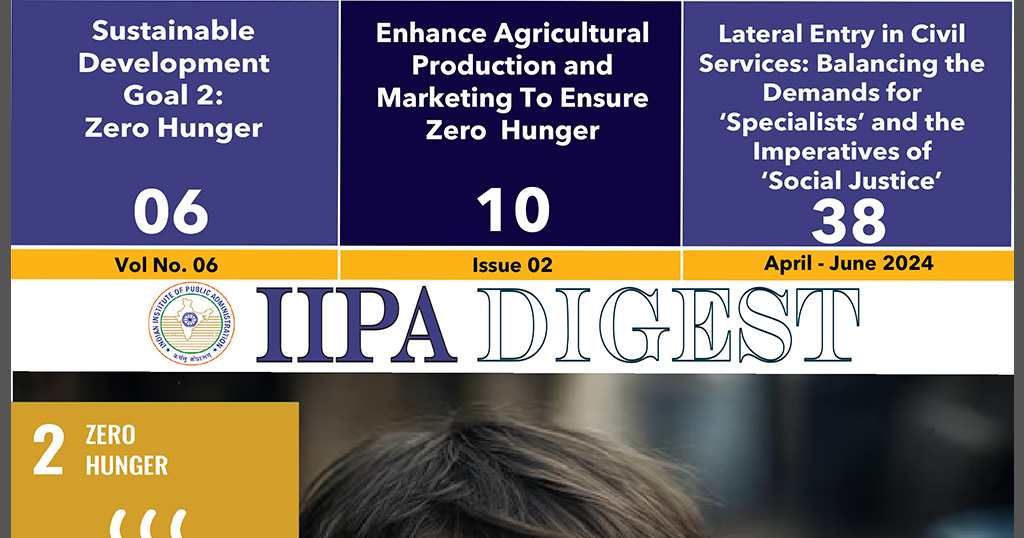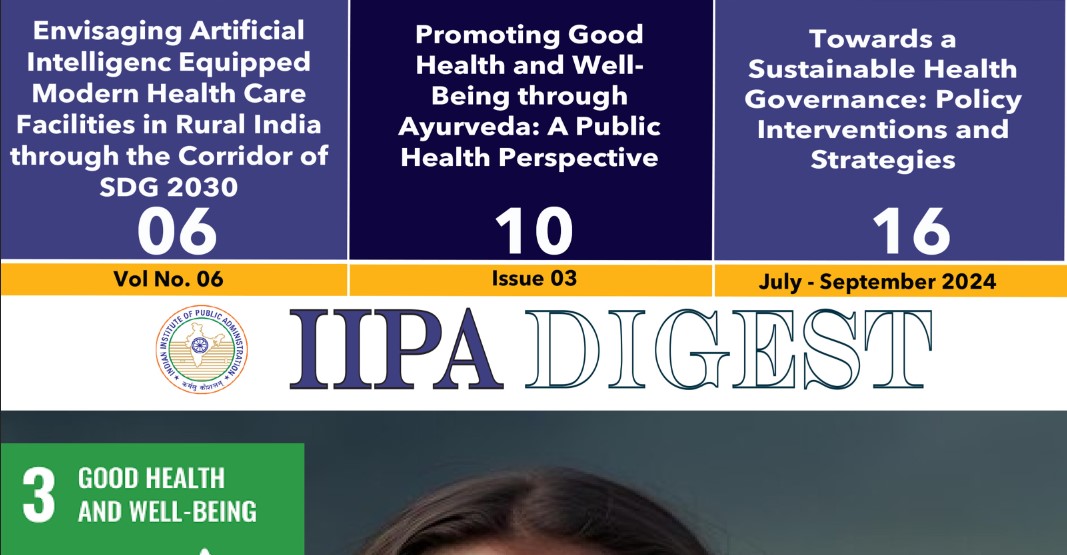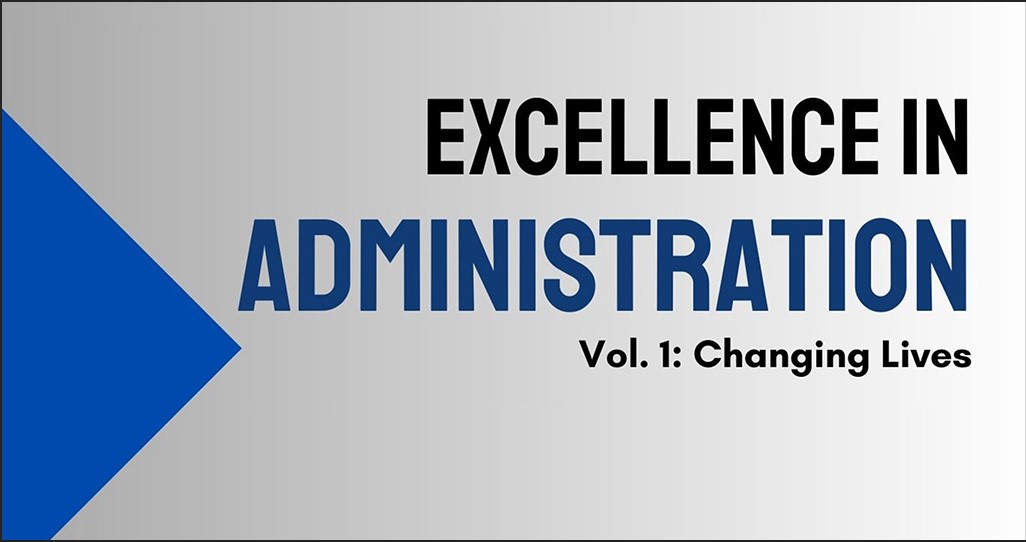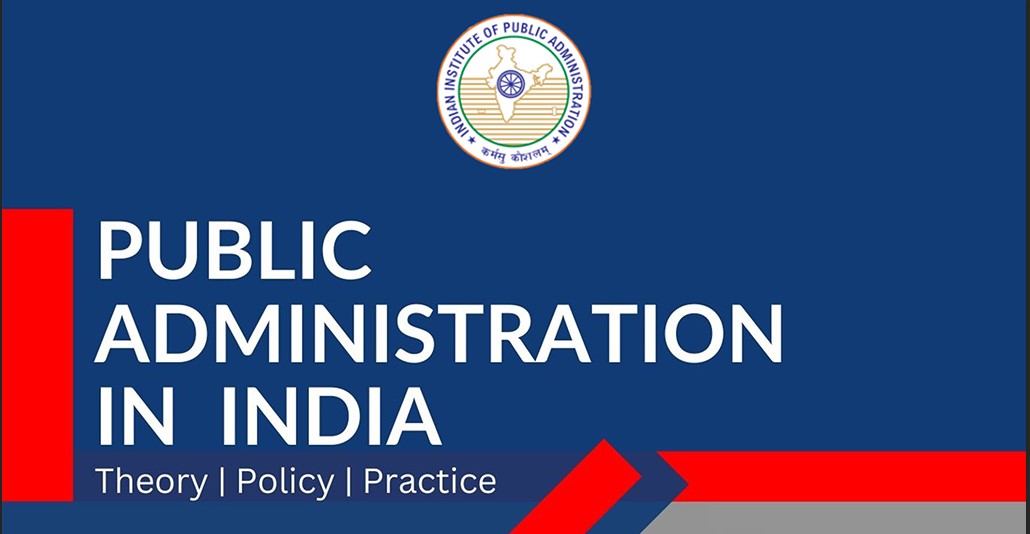Era of Artificial Intelligence: Transforming Governance, Services, and Society
Abstract
The age of Artificial Intelligence (AI) signifies a major shift in human development, where intelligent technologies are transforming governance, the economy, and society as a whole. With worldwide investments expected to push the AI industry beyond USD 1.8 trillion by 2030, AI is increasingly becoming critical for data-informed decision-making, service delivery, and sustainable progress. India’s ambitious IndiaAI Mission, backed by a ₹10,371.92 crore budget, highlights the country’s dedication to utilizing AI for inclusive growth through efforts such as AI-enhanced governance, digital public infrastructure, and skill enhancement. Although AI holds vast transformative potential, spanning climate risk forecasting and healthcare advancements to improved language accessibility, it also poses considerable challenges, including ethical dilemmas, job displacement, energy consumption, and data privacy issues. This essay examines the path of AI’s evolution, its impact on India's development, and the necessity for a balanced framework that encourages innovation while protecting human values.
Introduction
The twenty-first century is often described as the era of artificial intelligence (AI), a transformative epoch in which algorithms, machine learning, and predictive analytics are reshaping the way societies operate. AI is not merely a continuation of the information
revolution of the late twentieth century it represents a paradigm shift. Unlike earlier computational technologies that required explicit instructions, AI systems possess the ability to learn from vast datasets, recognize patterns, and make autonomous or semi-autonomous decisions (Russell & Norvig, 2021).
For governments and public institutions, AI presents a unique paradox. On one hand, it promises unprecedented opportunities: more efficient public services, evidence-based policy, enhanced public safety, and inclusive service delivery. AI can reduce bureaucratic inefficiencies, expand access to healthcare, and improve agricultural productivity (NITI Aayog, 2018). On the other hand, AI introduces new risks, such as algorithmic bias, opacity in decision-making, cybersecurity vulnerabilities, and environmental burdens from energy-intensive computing (Crawford, 2021).
As UN Secretary-General António Guterres (2023) warned, AI could become a “great enabler or a risk multiplier,” depending on the governance structures and ethical frameworks adopted by states. Nations such as Estonia have pioneered AI-enabled digital governance through platforms like X-Road, while India has leveraged AI-driven Aadhaar-enabled services and Unified Payments Interface (UPI) to deliver welfare at scale (MeitY, 2022). Meanwhile, concerns over AI-driven surveillance in China or algorithmic bias in the U.S. criminal justice system highlight the darker dimensions of unregulated AI.
This thesis is designed to provide a comprehensive sectoral analysis of how AI is reshaping governance, services, and society. It covers nineteen thematic domains, ranging from healthcare and agriculture to cybersecurity and ethics, and situates these discussions within the global
Literature Review
The scholarly and policy literature on AI in governance and public service delivery has grown exponentially in the past decade. The review can be organized into four broad strands:
AI in Public Administration and Service Delivery
Public administration scholars highlight the potential of AI to transform bureaucracies into responsive, citizen-centric entities. Osborne and Brown (2019) argue that AI-enabled automation, such as natural language processing for grievance redressal or predictive analytics for welfare targeting, reduces inefficiencies and expands outreach. Case studies of Estonia’s digital governance model and India’s Aadhaar-UPI ecosystem illustrate how AI-enabled platforms reduce transaction costs and enhance service inclusion (MeitY, 2022).
AI in Policy Formulation and Decision-Making
Policy studies emphasize that AI supports evidence-based decision-making by analyzing large datasets and uncovering trends invisible to human analysts (Janssen & Kuk, 2016). Governments increasingly rely on predictive models for urban planning, traffic management, and climate risk assessment. The OECD AI Principles (2019) stress that such uses must be transparent, robust, and accountable to avoid “black-box” governance.
AI and Ethics: Privacy, Bias, and Human Rights
Critical literature foregrounds the risks of unregulated AI. Crawford’s Atlas of AI (2021) documents the extractive and exploitative dimensions of AI systems, including resource-intensive computing, labor exploitation in data labeling, and the perpetuation of racial or gender bias in algorithms. UNESCO’s Recommendation on the Ethics of Artificial Intelligence (2021) emphasizes the need for fairness, accountability, and human oversight in AI deployments. These works caution against unchecked surveillance states and the privatization of public decision-making.
AI and Sustainable Development
Literature on sustainable development explores AI’s dual role. On one side, AI enhances sustainability by improving climate modeling, energy optimization, and disaster forecasting (UNEP, 2022). On the other side, AI systems demand massive energy and water resources; the International Energy Agency (IEA, 2023) estimates that global data centers heavily driven by AI could consume up to 945 TWh by 2030. The World Economic Forum’s Future of Jobs Report (2023) also emphasizes AI’s labor market disruptions, projecting that while AI may displace 83 million jobs by 2030, it may also create 69 million new ones, requiring extensive reskilling initiatives.
Gaps Identified in the Literature
Despite rich analysis, notable gaps remain:
1. Limited study of AI adoption in developing countries, especially in governance models across South Asia, Africa, and Latin America.
2. Insufficient focus on citizen trust and grievance redressal mechanisms in AI-mediated governance.
Gaps Identified in Literature
Although there is a wealth of analysis regarding AI’s technical functionalities, there are still gaps in understanding: The integration of AI within the governance frameworks of developing nations (such as India, Brazil, and Kenya). The evolution of citizen trust and mechanisms for addressing grievances in states that utilize AI. The environmental and ethical implications of large-scale AI deployment. The regulatory relationship between data protection regulations (e.g., India’s DPDP Act) and sector-specific frameworks for AI (e.g., EU AI Act).
Contribution of This Essay This essay adds to the literature by providing: A detailed sectoral overview of the role of AI across 19 domains of public interest. The inclusion of real-time examples, dashboards, and data from India and other settings. A critical focus on sustainability, ethics, and governance frameworks, aligning AI within the UNSDG framework. Recommendations for the responsible implementation of AI specifically for public service delivery.
Artificial Intelligence in Governance and Public Service Delivery: Opportunities, Challenges, and Policy Implications :
Artificial Intelligence (AI) is rapidly redefining the relationship between the state and the citizen. What began as a phase of “e-governance” focused primarily on digitizing services is now evolving into “AI-governance,” where governments leverage algorithms, machine learning, and predictive analytics to anticipate needs, personalize service delivery, and automate decision-making. The shift represents a qualitative leap in governance, promising enhanced efficiency, inclusivity, and transparency, while also raising profound ethical and administrative dilemmas.
In public policy terms, AI constitutes not merely a technological innovation but a paradigmatic shift in governance structures, decision-making processes, and the social contract itself. This thesis examines the role of AI in governance and public service delivery, drawing on both Indian and global experiences, while situating these developments in the broader context of ethical considerations and democratic accountability.
Case Studies: India and the World
1. India:
Aadhaar-enabled governance with over 1.3 billion enrollments demonstrates the role of AI in detecting fraud in welfare programs and ensuring efficiency in Direct Benefit Transfers.
Unified Payments Interface (UPI), which processed nearly 19.47 billion transactions in July 2025 alone, relies heavily on AI algorithms for fraud prevention and risk scoring.
NITI Aayog’s AI for All Strategy identifies healthcare, agriculture, education, and smart mobility as national priorities.
2. Global:
Estonia’s KrattAI framework integrates conversational AI across ministries, enabling citizens to interact seamlessly with government databases.
The UK’s National Health Service (NHS) employs AI chatbots for preliminary diagnosis, reducing pressure on medical professionals.
Singapore’s Smart Nation Initiative integrates AI in urban planning, transportation, and e-governance platforms.
Ethical and Administrative Dimensions of AI in Governance
The integration of Artificial Intelligence into governance frameworks offers unprecedented opportunities for efficiency and citizen-centric service delivery, but it also raises significant ethical and administrative challenges that demand critical scrutiny.
A foremost concern is algorithmic bias. AI systems are only as reliable as the data on which they are trained. When these datasets reflect societal prejudices or structural inequalities, the outputs can replicate and even magnify them. As O’Neil (2016) argues in Weapons of Math Destruction, algorithms, while appearing neutral, often “encode” social biases, leading to discriminatory outcomes in areas such as welfare targeting, predictive policing, or credit scoring. In governance, such biases can undermine the state’s commitment to equity and social justice.
Closely linked to bias are privacy and autonomy concerns. AI in governance typically relies on large-scale data collection, including biometric and behavioral information. Without robust safeguards, this data can become a tool of surveillance rather than empowerment. The deployment of facial recognition technologies in public spaces, for example, has sparked global debates about the balance between security and individual rights (Amnesty International, 2022). In India, the Srikrishna Committee Report (2018) underscored that unchecked data collection threatens the constitutional guarantee of the right to privacy under Article 21.
Another pressing issue is the opacity of algorithmic decision-making. AI-driven systems are often described as “black boxes,” as their decision-making processes are not easily explainable even to developers. This lack of transparency creates an accountability gap, raising questions about who bears responsibility when an algorithmic decision adversely affects citizens. In governance contexts, such opacity can erode public trust in state institutions.
Finally, the digital divide poses a structural barrier to inclusive AI governance. According to the World Bank (2021), nearly half of the global population still lacks reliable internet access. In India, disparities in digital literacy and infrastructure mean that rural populations and economically disadvantaged groups may be excluded from AI-enabled services, thereby exacerbating existing inequalities. What is envisioned as a tool for empowerment may, paradoxically, deepen marginalization if inclusivity is not built into design and deployment.
At the same time, AI’s administrative benefits cannot be ignored. It has enabled governments to streamline bureaucratic processes, reduce inefficiencies, and enhance real-time monitoring and feedback loops. For example, grievance redressal systems powered by AI chatbots have reduced waiting times and increased accessibility for citizens (NITI Aayog, 2020). In rural governance, AI-driven agriculture monitoring systems have provided timely intelligence to farmers, demonstrating how technology can expand the reach of state services to marginalized groups.
In essence, the ethical and administrative dimensions of AI in governance illustrate a paradox: while the technology offers unparalleled opportunities to enhance state capacity and public service delivery, it simultaneously raises normative questions about fairness, accountability, and inclusion. The challenge for policymakers lies in striking a balance between technological innovation and democratic values, ensuring that AI becomes an instrument of empowerment rather than exclusion.
AI Applications in Governance and Public Services
Public Services and Governance
AI has the potential to revolutionize public service delivery by enhancing efficiency, transparency, and inclusiveness. Governments worldwide are increasingly integrating AI into administrative systems to automate citizen services, process applications, and monitor policy implementation. For instance, Estonia’s e-Governance model uses AI-enabled platforms such as KrattAI to deliver digital public services ranging from tax filing to medical prescriptions (OECD, 2021). Similarly, India’s Aadhaar biometric system, linked to AI-driven platforms, supports welfare targeting, subsidies, and identity verification for over 1.3 billion citizens (MeitY, 2022). A 2022 Accenture report estimated that AI could increase public sector productivity by up to 40%, primarily by automating routine tasks (Accenture, 2022). However, the risks include excessive surveillance and algorithmic bias, particularly when AI systems lack transparency.
Table 1: Key AI Applications in Governance
Policy Formulation and Decision-Making
AI enhances the policy cycle by analyzing large, complex datasets, enabling evidence-based policymaking. Governments use predictive analytics to design policies tailored to demographic and regional needs. For example, New York City’s Mayor’s Office of Data Analytics (MODA) employs machine learning to analyze housing violations, allowing proactive inspection scheduling (NYC MODA, 2020). Similarly, India’s NITI Aayog’s National AI Strategy identifies priority sectors (health, agriculture, education, smart mobility) where AI-driven insights can accelerate policy innovation (NITI Aayog, 2018). Yet, scholars warn against “black-box policymaking” where opaque algorithms influence decisions without accountability (Janssen & Kuk, 2016).
Public Safety and Security
AI plays a crucial role in modern policing and security systems. Predictive policing tools, surveillance systems, and natural language processing are increasingly deployed to anticipate and prevent crimes. In the United States, the PredPol system uses machine learning to identify potential crime hotspots, helping law enforcement allocate resources more effectively (Ferguson, 2017). In India, the Delhi Police Crime Mapping Analytics and Predictive System (CMAPS) integrates AI with real-time crime data for improved patrolling (MeitY, 2022). However, studies reveal racial bias in U.S. predictive policing systems, leading to disproportionate targeting of minority groups (Lum & Isaac, 2016). Thus, AI in law enforcement must balance efficiency with fairness and rights protection.
Healthcare and Social Services
Healthcare is one of the most transformative sectors for AI. AI supports diagnostics, telemedicine, drug discovery, and public health surveillance.For example, AI-based radiology tools like IBM Watson assist doctors in detecting cancer earlier and with greater accuracy.
During the COVID-19 pandemic, AI algorithms enabled real-time tracking of infection spread, such as BlueDot, which predicted the outbreak ahead of WHO announcements (Bogoch et al., 2020).In India, the eSanjeevani AI-driven telemedicine platform facilitated over 100 million remote consultations by 2022, bridging gaps in rural healthcare access (MoHFW, 2022).
Table 2: AI in Healthcare Applications
Transportation and Infrastructure
Smart transportation and infrastructure are key beneficiaries of AI. Intelligent traffic systems, autonomous vehicles, and predictive maintenance for infrastructure are reshaping urban landscapes. For example, Singapore’s Land Transport Authority uses AI to optimize traffic flow and reduce congestion through real-time data analytics (LTA Singapore, 2021). In India, AI-driven traffic cameras in Bengaluru identify traffic violations, improving law enforcement (The Hindu, 2022). The McKinsey Global Institute (2020) projects that AI-enabled smart infrastructure could save up to $1 trillion annually by reducing delays, maintenance costs, and energy consumption.
Cybersecurity and Threat Analytics
With growing digitalization, AI is vital in cybersecurity. AI-driven systems detect anomalies, predict threats, and automate responses against cyberattacks.For instance, Darktrace, a UK-based AI cybersecurity firm, uses unsupervised machine learning to detect abnormal network behavior, mitigating cyber threats in real time (Darktrace, 2021).
According to IBM’s Cost of a Data Breach Report (2023), organizations that deployed AI-enabled cybersecurity reduced breach costs by $1.8 million on average compared to those without AI systems. Yet, adversaries also use AI for more sophisticated attacks such as deepfakes, phishing automation, and AI-assisted malware (Europol, 2022). Thus, the AI-security race remains a double-edged sword.
AI for Sustainable Development and Citizen-Centric Services
Environmental Monitoring, Sustainability, and Disaster Management
AI is increasingly being deployed to combat climate change, conserve biodiversity, and strengthen disaster management frameworks. Machine learning models can process satellite imagery, predict extreme weather, and optimize resource management. For example, Google’s AI for Social Good initiative developed Flood Forecasting Systems in India and Bangladesh,
providing warnings to millions of people living in flood-prone regions (Google AI Blog, 2021). Similarly, the United Nations Global Pulse Lab applies AI to monitor deforestation trends using satellite imagery. A report by the World Economic Forum (2021) suggests that AI could contribute to a 5.2% reduction in global greenhouse gas emissions by 2030 through optimization of energy, transportation, and agriculture.
Table 3: AI in Environment and Disaster Management
Education and Workforce Development
AI has reshaped education by offering personalized learning, intelligent tutoring systems, and predictive analytics for student outcomes. It also plays a critical role in workforce reskilling, addressing the disruption caused by automation. For example, China’s Squirrel AI Learning adapts lessons in real-time based on student performance, reportedly improving outcomes for over 2 million learners (Squirrel AI, 2021). In India, platforms such as DIKSHA integrate AI to deliver tailored content in multiple regional languages, reaching teachers and students across rural areas. The World Bank (2020) highlights that AI-enabled edtech can reduce dropout rates by identifying at-risk students early. Simultaneously, the World Economic Forum (2023) estimates that over 50% of workers will require reskilling by 2025, with AI-powered platforms playing a major role in training.
Legal Research and Judiciary
AI has begun transforming judicial systems by enhancing legal research, streamlining case management, and even offering predictive insights into legal outcomes.
In India, the Supreme Court has introduced AI-based translation systems to make judgments accessible in multiple languages (CJI Office, 2021). Legal research platforms such as ROSS Intelligence (U.S.) and CaseMine (India) use natural language processing to quickly retrieve relevant case laws, cutting research time significantly.
A study by the Council of Europe (2020) notes that AI can reduce case pendency, which is a severe challenge in countries like India, where over 50 million cases remain pending (National Judicial Data Grid, 2023). However, the ethical debate continues: should predictive justice tools influence verdicts, or should human judges retain primacy? Scholars argue that AI can only be an assistive tool but never replace judicial discretion (Katyal, 2020).
Public Grievance Redressal
AI has become central in strengthening citizen feedback mechanisms. Chatbots, automated helpdesks, and sentiment analysis tools ensure timely response to public grievances.For example, India’s CPGRAMS (Centralized Public Grievance Redress and Monitoring System) uses AI to classify complaints and route them to the appropriate ministry (DARPG, 2022). Similarly, the UK Ombudsman Service employs AI-driven chatbots for quicker grievance triage.
A PwC (2022) survey found that AI-enabled grievance systems reduced resolution times by 30–40%, enhancing trust in governance.
Table 4: AI in Grievance Systems
Agriculture and Food Security
AI offers transformative solutions for food security through precision agriculture, crop yield forecasting, and pest management.In India, Microsoft’s AI for Agriculture project with ICRISAT provides farmers with AI-driven sowing advisories, reportedly increasing yields by 30% in pilot districts (ICRISAT, 2019). Similarly, Kenya’s AI-powered pest monitoring tools help in combating locust infestations. According to the FAO (2022), AI-driven smart farming techniques could increase global food production by 70% by 2050 while reducing water and fertilizer use.
Banking and Rural Financial Services
AI in financial services has enabled credit scoring, fraud detection, and micro-lending, especially in underserved rural areas. For instance, Indian fintech firms like Lendingkart and Paytm deploy AI to assess creditworthiness using alternative data (mobile usage, transaction history), empowering small entrepreneurs who lack formal credit histories.. In Africa, M-Pesa integrates AI with mobile banking, allowing rural populations access to financial services without traditional bank branches. The Reserve Bank of India (2021) notes that AI-driven financial inclusion could bring 190 million unbanked Indians into the formal economy.
Table 5: AI in Banking & Financial Inclusion
Clean Water and Sanitation
Access to safe drinking water and sanitation is a fundamental human right and a United Nations Sustainable Development Goal (SDG 6). AI is emerging as a game-changer in water resource management and sanitation planning. AI-powered systems can monitor water quality in real-time using IoT sensors and predictive analytics. For instance, IBM’s Green Horizons project in China has deployed AI to forecast water pollution trends and improve treatment plant efficiency. Similarly, India’s Jal Jeevan Mission integrates AI-based dashboards to track rural water supply delivery. The World Health Organization (WHO, 2022) estimates that 2 billion people worldwide lack access to safely managed drinking water. AI-enabled predictive models can help governments identify contamination sources, optimize supply, and prevent water-borne epidemics.
Table 6: AI in Water & Sanitation
Manufacturing and Logistics
AI-driven automation, robotics, and predictive analytics have revolutionized manufacturing and supply chain logistics. In Industry 4.0, smart factories deploy AI for predictive maintenance, reducing downtime by up to 30% (McKinsey, 2021). For instance, Siemens’ MindSphere platform collects machine data and uses AI to optimize production.In logistics, companies like Amazon use AI to manage warehouse robotics, optimize delivery routes, and forecast demand. India’s Reliance Retail leverages AI-based supply chain platforms for real-time inventory tracking across thousands of stores.
Social Media Monitoring for Law Enforcement
The vast expansion of social media has created opportunities and challenges for law enforcement. AI-powered social media monitoring tools allow authorities to track misinformation, hate speech, and potential threats in real time. For example, DARPA’s Social Media in Strategic Communication (SMISC) program in the U.S. employs AI to detect disinformation campaigns. In India, the Ministry of Home Affairs has deployed AI-based monitoring to curb communal violence fueled by social media rumors.The UNESCO Report (2021) warns, however, that excessive monitoring may infringe on privacy rights, necessitating robust checks and balances.
Table 7: AI in Social Media Policing
AI is integral to advancing the 2030 Agenda for Sustainable Development. Its applications span poverty reduction, gender equality, climate action, and partnerships for innovation. According to the UNESCO (2022) report on AI and SDGs, nearly 134 AI use cases were identified that directly support the 17 SDGs. For example:
• SDG 2 (Zero Hunger): AI for precision farming in Africa and India.
• SDG 3 (Good Health): AI in COVID-19 vaccine distribution logistics.
• SDG 11 (Sustainable Cities): AI in smart urban traffic management in Singapore.
• SDG 13 (Climate Action): AI models predicting global warming trajectories.
Data Privacy and Security: Regulatory Gaps
The proliferation of AI has created unprecedented risks for data privacy, consent, and surveillance. While Europe has implemented the General Data Protection Regulation (GDPR), many countries lack comprehensive AI-specific legislation.For instance, India’s Digital Personal Data Protection Act, 2023, addresses user consent and data localization but does not fully regulate AI-driven profiling. Similarly, the U.S. relies on sectoral laws without a national AI privacy act.
The OECD AI Principles (2020) and EU AI Act (2023) attempt to create a global governance framework, yet enforcement gaps remain. A PwC (2022) survey shows that 78% of citizens globally worry about AI misuse of personal data.
Table 8: Global AI Privacy Frameworks
Carbon Footprint: Need for Sustainable AI
AI itself contributes to carbon emissions through energy-intensive training of large models. A 2019 study by MIT found that training a single deep learning model can emit as much carbon as five cars over their lifetimes. As AI adoption accelerates, Green AI principles emphasize efficiency, renewable energy use, and smaller model training. Google, for example, has shifted its AI data centers to operate on 100% renewable energy. The International Energy Agency (2023) estimates that without sustainable practices, data centers could consume 8% of global electricity by 2030.
Table 9: Carbon Emissions of AI Training
Ethical Framework and Governance
Ethical AI governance remains the most pressing challenge. Issues include bias in algorithms, transparency, accountability, and human oversight. The EU AI Act (2023) classifies AI into risk categories, banning high-risk uses such as social scoring . India’s NITI Aayog’s Responsible AI (2021) framework emphasizes fairness, inclusivity, and explainability.UNESCO’s Recommendation on the Ethics of AI (2021), adopted by 193 countries, is the first global normative framework. Case studies such as facial recognition bans in San Francisco highlight how cities are moving toward restrictive policies. Meanwhile, countries like China continue to deploy large-scale AI surveillance, raising global ethical concerns.
Table 9: Ethical AI Frameworks
Conclusion
Artificial Intelligence (AI) has emerged as a transformative force in the 21st century, with wide-ranging applications across education, healthcare, governance, manufacturing, logistics, agriculture, and security. The evidence presented in this thesis demonstrates that AI is not only a technological revolution but also a socio-economic and ethical one, with the potential to redefine human progress. The research established several critical findings:
1. AI as a driver of development: From precision agriculture and smart water management to AI-assisted education, the technology is helping bridge gaps in human capability, especially in developing economies such as India.
2. Healthcare and pandemic response: AI-based diagnostic tools, predictive analytics, and logistics planning during the COVID-19 pandemic proved their effectiveness in crisis management.
3. AI in governance and social good: Smart policing, citizen engagement platforms, and SDG-driven applications show AI’s role in delivering efficient, transparent, and inclusive governance.
4. Challenges of inclusivity and equity: Despite the benefits, a digital divide persists. Nations with limited infrastructure risk being left behind in the global AI revolution. Bridging this gap will be vital for achieving the United Nations Sustainable Development Goals (SDGs).
5. Data privacy, ethics, and carbon footprint: While AI promises efficiency, unchecked growth threatens data security, citizen privacy, and the environment due to its massive energy demands. The global push for Responsible AI and Green AI underscores the urgency of creating sustainable systems.
6. Need for global governance: AI cannot be governed in silos. Multilateral frameworks like UNESCO’s Recommendation on the Ethics of AI (2021) and the EU AI Act (2023) highlight a growing consensus for standardized ethical and regulatory norms.
In conclusion, AI represents both promise and peril. Harnessing it responsibly demands ethical design, global cooperation, sustainable practices, and inclusivity. If integrated with sensitivity to human rights and environmental concerns, AI can act as a force multiplier in advancing human development, ensuring that the technology serves not just economies but also humanity’s collective future.
As the Indian philosopher Swami Vivekananda said:
“Education is the manifestation of perfection already in man.”
If AI is directed wisely, it can complement this quest for perfection by amplifying human potential while respecting human dignity.
Way Forward: Policy Recommendations
1. Ethical AI Frameworks: Countries must adopt frameworks that ensure fairness, transparency, and accountability. The EU’s AI Act (2024) is a global benchmark, while India’s “Responsible AI for All” initiative signals intent.
2. Capacity Building: Civil servants require training in data analytics and AI literacy.
3. Incorporating AI modules into administrative training, as piloted in India’s LBSNAA, will prevent over-reliance on external vendors.
4. Public-Private Partnerships: Collaborations with startups and academia can accelerate innovation. For example, Microsoft’s partnership with Andhra Pradesh helped predict school dropouts using AI.
5. Data Protection Laws: Robust legal safeguards, such as India’s Digital Personal Data Protection Act (2023), are necessary to balance innovation with citizens’ right to privacy.
6. Inclusive AI: AI tools must be localized to vernacular languages and rural contexts. Projects like Bhashini and Google’s AI-based flood forecasting in Bihar illustrate inclusive deployment.
AI in governance and public services represents both a transformative opportunity and a profound challenge. It offers the promise of efficiency, personalization, and inclusivity in service delivery, while simultaneously raising ethical and political questions about privacy, bias, and accountability.
For policymakers, the task lies not merely in deploying AI technologies but in ensuring that their integration aligns with democratic values, constitutional morality, and principles of social justice. AI must serve as an enabler of governance, not a substitute for human responsibility. In the final analysis, the future of AI in governance depends on whether states can craft regulatory frameworks, build institutional capacity, and foster inclusivity while safeguarding fundamental rights. Only then can “AI-governance” evolve into a truly citizen-centric governance paradigm. Inclusive AI promotes equity, social justice, and bridges the rural-urban digital divide. AI in governance is not just about technology but about transforming how states interact with citizens. It can improve efficiency, inclusivity, and transparency if guided by ethics, accountability, and robust regulation. The way forward lies in adopting Ethical AI frameworks (for trust), Capacity building (for effective usage), PPPs (for innovation), Data Protection laws (for rights), and Inclusive AI.
Bibliography
1. European Commission. (2023). The EU Artificial Intelligence Act. Brussels: European Union. Retrieved from https://digital-strategy.ec.europa.eu
2. International Energy Agency. (2023). Data Centres and Energy Consumption. Paris: IEA. Retrieved from https://www.iea.org
3. McKinsey & Company. (2021). The State of AI in 2021. New York: McKinsey Global Institute.
4. MIT Technology Review. (2019). The computing and carbon cost of deep learning.
5. Cambridge, MA: MIT Press.
6. NITI Aayog. (2021). Responsible AI for All: Approach Document. Government of India.
7. Retrieved from https://www.niti.gov.in
8. OECD. (2020). OECD Principles on Artificial Intelligence. Paris: OECD Publishing.
9. PwC. (2022). Global AI Survey: AI Predictions and Citizen Trust. London: PricewaterhouseCoopers.
10. UNESCO. (2021). Recommendation on the Ethics of Artificial Intelligence. Paris: United Nations Educational, Scientific, and Cultural Organization.
11. UNESCO. (2022). AI and the SDGs: Exploring the Crossroads. Paris: UNESCO Publishing.
12. UNESCO. (2023). Global Digital Compact: AI for All. New York: United Nations.
13. United Nations. (2015). Transforming Our World: The 2030 Agenda for Sustainable Development. New York: United Nations.
14. World Economic Forum. (2022). Shaping the Future of Advanced Manufacturing and Production. Geneva: WEF.
15. World Health Organization. (2022). Drinking-water: Key facts. Geneva: WHO. Retrieved from https://www.who.int
Leave a comment
More articles from Governance & Polity
